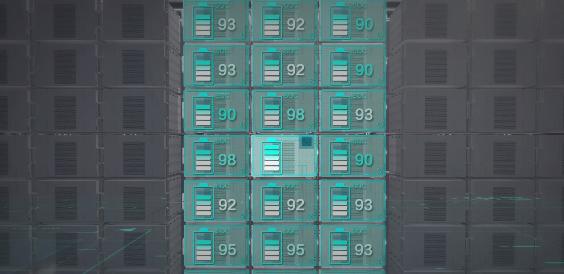Enhancing Energy Efficiency: The Role of ESS Solution in Pack and Rack-level Optimization
In the era of energy transition, the focus on sustainable and efficient energy usage is more pronounced than ever. Energy Storage Systems (ESS) have become instrumental in this shift, offering innovative solutions for managing and optimizing energy across various domains. ESS Solution, particularly at the pack and rack levels, are revolutionizing how we store, manage, and utilize energy, making systems more resilient, efficient, and environmentally friendly.
Pack-level Optimization and Battery Pack Optimizer
At the core of any ESS lies the battery pack, a critical component that demands efficient management to maximize its potential. Pack-level optimization, facilitated by advanced Battery Pack Optimizers, is key to harnessing the full capabilities of these energy storage units.

1.Energy Management: The optimizer plays a pivotal role in managing the energy dynamics of each cell in the battery pack. Regulating charging and discharging processes, ensures that energy is stored when surplus and released when in demand, thereby maintaining a balance that is essential for grid stability and energy conservation.
2.Health Monitoring: Longevity and performance of battery packs hinge on their health. The optimizer continually assesses each cell's condition, detecting anomalies like voltage deviations or abnormal temperatures, which are precursors to potential failures.
3.Thermal Management: Batteries are sensitive to temperature fluctuations. The optimizer incorporates sophisticated thermal management algorithms to maintain an optimal temperature range, thus preserving the integrity and efficiency of the battery cells.
Extended Benefits:
Enhanced energy efficiency leads to significant reductions in operational costs and carbon footprint.
Predictive maintenance, enabled by continuous health monitoring, minimizes downtime and extends the battery's lifecycle.
Improved safety protocols reduce the risk of battery-related incidents, ensuring a safer energy storage environment.
Rack-level Optimization and Smart Rack Controller
While pack-level optimization focuses on individual units, rack-level optimization is about synergizing these units. A Smart Rack Controller is at the forefront of this endeavor, integrating multiple battery packs to work as a cohesive, efficient energy storage system.

1.System Integration: This involves the orchestration of multiple battery packs, ensuring they operate in unison. The controller manages the flow of energy between these packs, adapting to changing energy demands and supply conditions.
2.Load Balancing: By distributing the energy load evenly across different packs, the controller prevents any single pack from being overutilized, thereby reducing wear and tear and promoting uniform aging of the batteries.
3.Data Analytics and Predictive Modeling: The controller utilizes advanced analytics to process vast amounts of data, offering insights into performance trends, potential system improvements, and predictive maintenance needs.
Expanded Benefits:
Improved system resilience against fluctuations in energy demand and supply, enhancing the reliability of the power grid.
Scalability of energy storage solutions, crucial for adapting to growing energy needs and integrating renewable sources.
Facilitates innovative energy strategies, like demand response and integration with renewable energy sources, paving the way for a more sustainable energy ecosystem.
The Future of ESS Solution
As we delve deeper into the realm of renewable energy and grapple with the challenges of a fluctuating energy landscape, the role of ESS Solution in energy optimization becomes increasingly significant. Innovations in battery technology, coupled with sophisticated management systems like Battery Pack Optimizers and Smart Rack Controllers, are setting the stage for a more efficient, reliable, and sustainable energy future. In the coming years, we can expect these systems to become more integrated with smart grid technologies, enabling more dynamic and responsive energy management. The incorporation of artificial intelligence and machine learning in ESS Solution will further enhance their predictive capabilities, leading to smarter, more proactive energy management strategies.
Conclusion
The journey towards a sustainable energy future is complex and challenging, but with advanced ESS Solution, we are well-equipped to tackle these challenges. Pack-level and rack-level optimizations are more than just technological advancements; they represent a paradigm shift in how we approach energy storage and management. By embracing these innovations, we are paving the way for a cleaner, more efficient, and resilient energy landscape.
